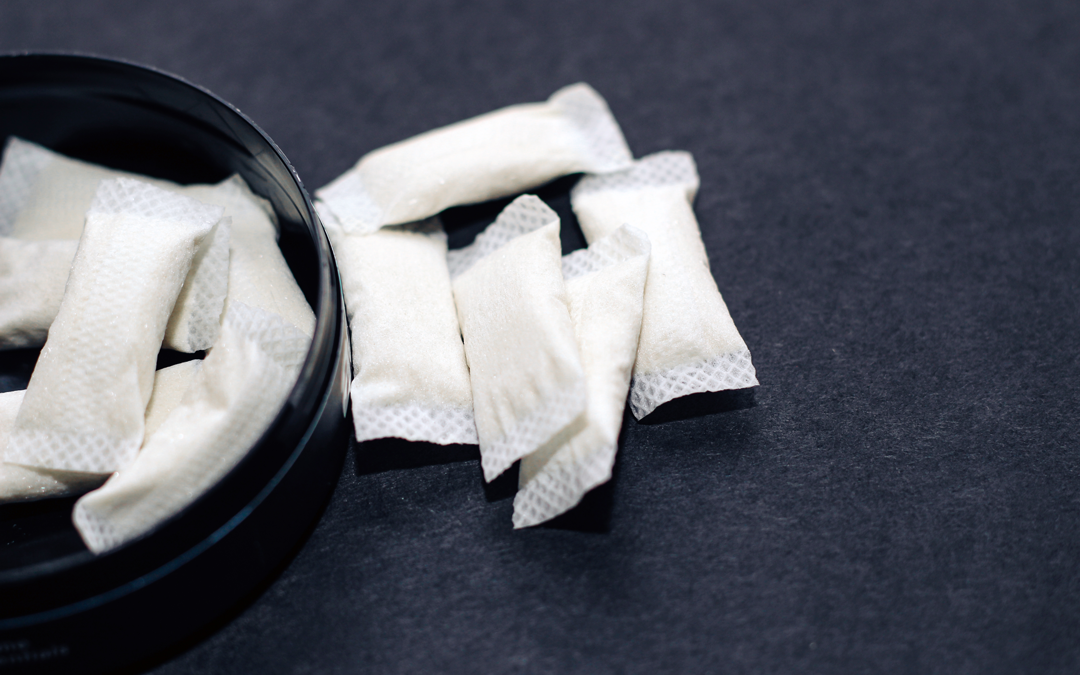
TSRC 2025 is behind us (read our TSRC wrap up here), and the industry has turned its attention to CORESTA 2025, which shall be held in Annecy, France.
CORESTA 2025
19-23 October | Annecy, France
The Labstat team is excited to present new research on oral nicotine pouches and heated tobacco products. Here’s a look at what to expect:
Does Flavor Influence the Nicotine Dissolution Profile of Oral Nicotine Pouches?
- Using a standardized 6 mg nicotine pouch formulation in coffee, mint, and mango flavors, researchers performed USP Type IV dissolution with artificial saliva (no enzymes) at 37 ± 0.5 °C and 4.0 ± 0.02 mL/min flow rate.
- Nicotine concentrations were measured by HPLC-UV, while flavor compounds were evaluated by SPME-GC/MS.
- Nicotine release ranged from 67% (mint) to 122% (mango) of labeled content.
- Despite this variation, statistical similarity factors (F2 = 77.5, F1 = 4.1) indicated overall comparable release kinetics — with subtle differences attributed to flavor formulation.
- These results have implications for product design, sensory performance, and method optimization.
Authors: Peter Joza, Andy Stinson, Leona Sirkisoon, Rebecca Cornelius, Fatma Rezgui, Malcolm Saxton
Presenter: Peter Joza

Simultaneous Determination of Derivatized and Underivatized HPHCs in Heated Tobacco Product Emissions
This analytical chemistry study introduced a single-injection GC-MS method to quantify four harmful and potentially harmful constituents (HPHCs) in HTP emissions:
- Glycidol
- 3-MCPD (3-chloro-1,2-propanediol)
- Furfural
- 2-furanmethanol (2FAM)
The method expands on previous derivatization techniques for glycidol to include 3-MCPD, while allowing furfural and 2FAM to remain underivatized. All compounds were successfully measured in one run with strong method performance:
- Linearity: R² > 0.998
- Recovery: 70–130%
- Calibration range: 10–500 ng/mL (glycidol, 3-MCPD, furfural); 1000–50,000 ng/mL (2FAM)
This streamlined approach increases lab efficiency and analytical consistency, making it a valuable tool for emissions testing in regulatory or quality-control settings.
Authors: Angel Rodriguez-Lafuente, Leona Sirkisoon, Hongxia Li, Malcolm Saxton, Andy Stinson, Vera Chistiakova, Peter Joza
Presenter: Angel Rodriguez-Lafuente

Does Nicotine Concentration Impact Flavor Release in Oral Nicotine-Containing Pouches?
- Building on prior work, this study examined how varying nicotine strengths influence flavor release for a single mango-flavored pouch.
- Researchers tested nicotine levels of 6, 9, 14, and 20 mg/pouch, using the same Type IV dissolution setup with fraction collection at seven time points.
- Flavor profiles were analyzed against 33 known volatile compounds using SPME-GC/MS, along with manual interpretation for other volatiles.
- Statistical modeling showed differences in flavor release correlated with nicotine strength. These differences suggest that higher nicotine levels may alter the flavor experience, offering important insight for product developers seeking to balance nicotine delivery and sensory quality in modern oral products.
Authors: Malcolm Saxton, Andy Stinson, Leona Sirkisoon, Rebecca Cornelius, Fatma Rezgui, Peter Joza
Presenter: Malcolm Saxton

Let’s Connect at CORESTA 2025
Our scientific and business development teams will be in Annecy, France throughout CORESTA 2025 and available for private meetings. We’d be happy to discuss how our analytical chemistry, in vitro toxicology, microbiology, and other services can support your PMTA needs.



